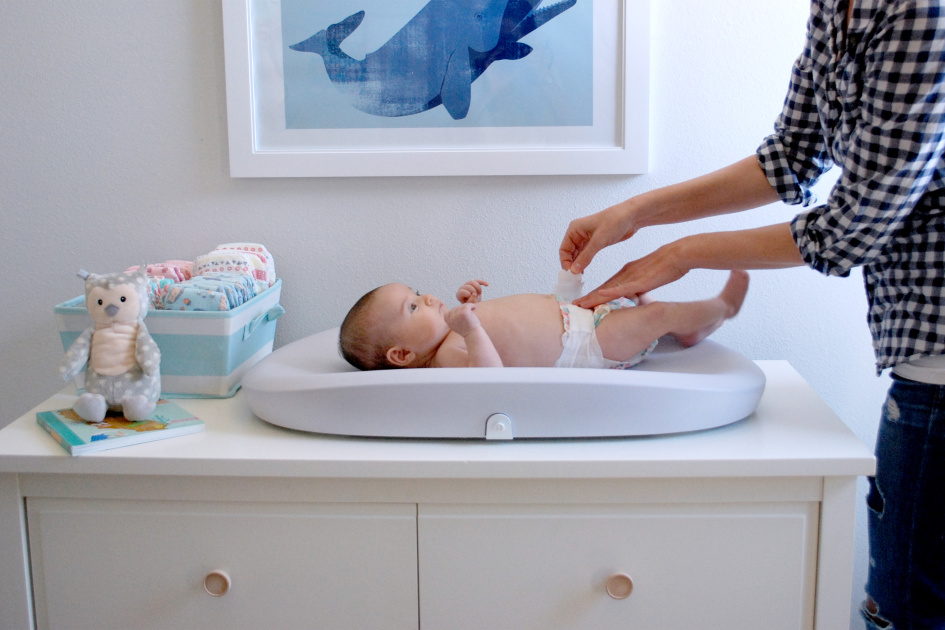Hardware and setup
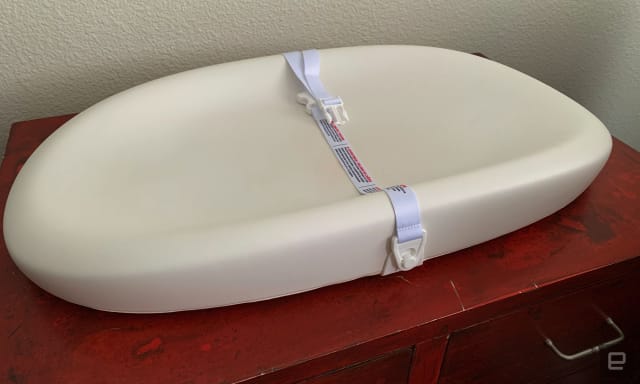
Amber Bouman / Engadget
The Grow is vaguely tongue-shaped, with a flat bottom and sloped sides. It’s roughly the height and width of two skateboards stacked side-to-side, and weighs 7.5 pounds, which is light enough to lift with one hand (an important detail, given I’m constantly holding at least one of my twins). It’s also compact enough that it fits neatly on my current changing table.
That said, I did have to ditch the padded changing pad that came with the table because, as with any scale, The Grow demands a hard even surface. Hatch includes a safety strap to secure babies; it’s hooked to each side of the Grow and is buckled and adjusted in front to keep wiggly infants safely on the scale while being weighed or changed. It’s worth noting that these straps should not be tucked under the Grow, as this can affect the accuracy of the reading.
Although I worried initially that the plastic would grow cold as the temperature dropped overnight, it only ever got cool. The Grow can be cleaned with a damp cloth or a baby wipe, making it easy to sanitize between uses. However, the underbelly of the scale could be damaged if it comes into contact with liquid, so don’t go overboard with the disinfectant.
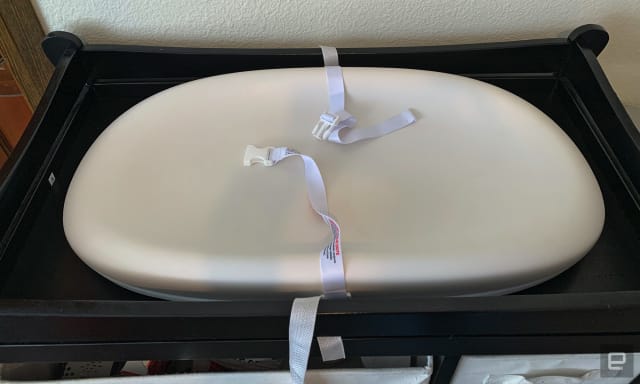
Amber Bouman / Engadget
The scale runs on three AA batteries, which are included in the box.. To set it up, you simply have to remove the pull-tab to activate the batteries and then pair to the app using Bluetooth. I couldn’t get connected on my first try, but replacing the batteries solved that issue. Given the minimal hardware, troubleshooting was pretty straightforward. Once I paired the device, the app showed instructions on how to zero out the scale and begin taking measurements.
Overall, the Grow is easy to operate. Tap the scale icon in the upper-right of the app dashboard to start a measurement. The app connects to the scale and you’re offered two options: Record Weight or Start a Feeding. Record Weight gives you a one-time measurement of your child’s weight; Start a Feeding requires you to weigh your child before and after a bottle or breastfeeding session to determine how much they’ve consumed.
At 10 months, my kids weigh between 16 and 21 pounds. Sometimes the Grow felt a bit small for them, especially as they’re in a peak “kick and wriggle constantly” phase. However, its weight limit is 44 pounds, so I can use it on them for a while still. At times they seemed fussy when I placed them on the Grow, but it’s hard to say if that’s because they didn’t like the harder surface for changing or if they were cranky over a dirty diaper (or being hungry, or tired, or mad that I wouldn’t let them eat floor lint again). The safety strap stayed put, was easy to adjust and fit both my kids snugly.
Software
Without the companion app, the Grow is just a changing surface so there’s a lot riding on the software experience. The app is… fine. It offers a mix of features, it’s decently organized and it does a great job of arranging data in charts and graphs so you can keep track of your kiddos’ daily stats. But I have my quibbles.
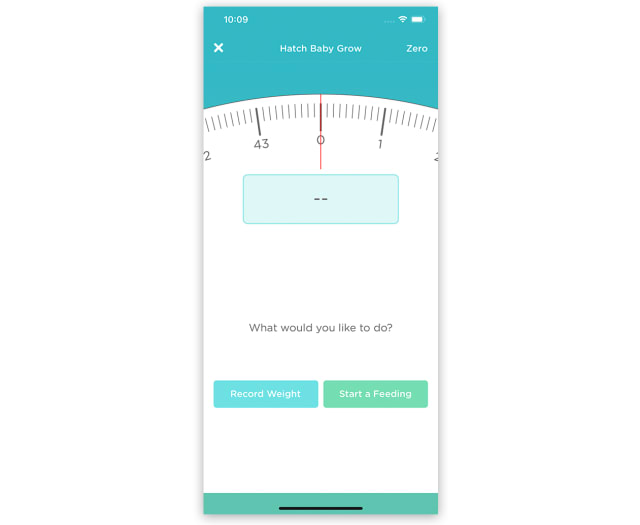
Hatch Baby
First, the part that works. The app is organized by child, and allows parents and caregivers to keep track of stats like feedings (bottle or breast), diaper changes and sleep schedule. It also has fields for other details about your child: length, daily photos, pumping history, reminders and notes. You can select which of these will appear on your dashboard view (which offers you quick access to everything on your child’s profile).
The dashboard is also where your child’s daily photo/profile photo is displayed and where you can see their daily schedule; basically, it’s a timeline that pinpoints when you added entries for feeding, diapers, pumping or sleep. The schedule keeps track of a week’s worth of data at a time. If you want to see more information, clicking the graph button in the upper-left corner will take you to the stats page, which provides data on all the metrics the app keeps track of.
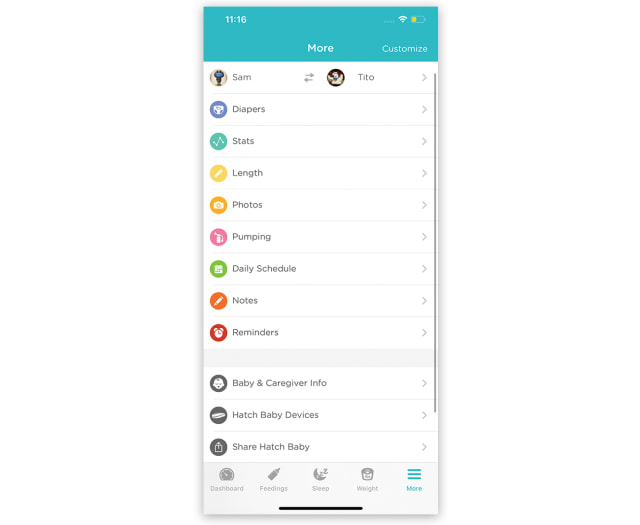
Hatch Baby
But here’s the thing: I already use an app to keep track of this information — and since I couldn’t find a way to import any data or info from it to the Hatch Baby app, I wound up having to enter all the details for my twins into each platform. That lasted about two days. It’s hard enough to remember to input all the details for two babies into one program, let alone copy it over into a second. If you already have a tracking app you like, you’ll either have to give it up or transfer to Hatch Baby. Or enter data into two apps if that’s how you want to spend your time. (Not recommended.)
Also, the app I currently use (Baby Tracker) offers more features than Hatch. Baby Tracker allows me to track solid starter foods as well as bottle or breast feeds. It has fields for medications, temperature and vaccinations, and lets me track events like bath times and nail clippings. This meant the Hatch Baby app was mainly useful for weight tracking. But even that data wasn’t displayed very clearly in chart form, which almost defeated the purpose.
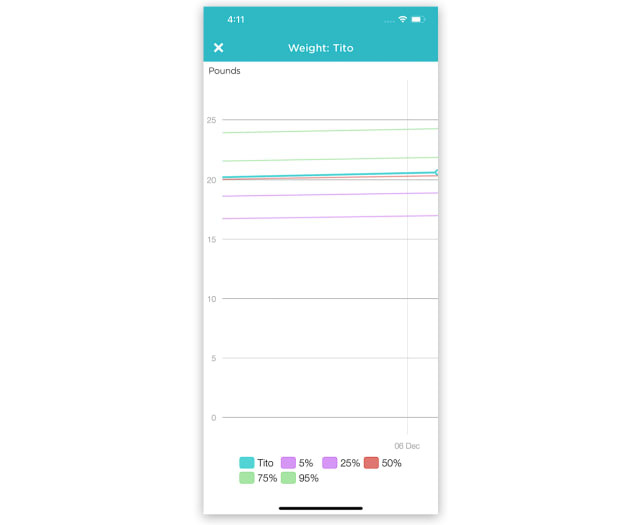
Hatch Baby
One of the Grow’s claims — and the one I was most interested in — is that it can track how much your baby has eaten during a feeding session. This is particularly useful for those who are breastfeeding, where it can be difficult to pinpoint how much a baby has consumed. However, there are plenty of reasons I’d want to track this information. For example, my daughter has feeding issues and my son spits up frequently. In both cases, it’s important for me to know how much nutrition they’re getting.
Unfortunately, the Grow wasn’t as precise here as I was hoping. It showed my son at 7.75 ounces in a feed when I gave him a six-ounce bottle. Likewise, the Grow told me my daughter had finished off four ounces in the same feed, when her four-ounce bottle still had roughly an ounce left in it. A later reading showed my son had eaten 14 ounces, which is more than double what his bottle could actually hold, and that my daughter had 3.5 ounces, which was about an ounce more than the measurement lines on her bottle would have you believe.
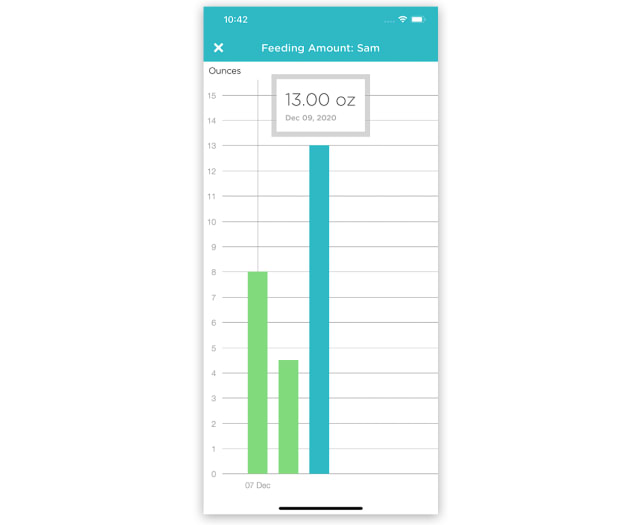
Hatch Baby
In a YouTube video, Hatch recommends the “book test” to verify that the Grow is taking accurate measurements. This is simply weighing the same book a few times in a row; as the book isn’t moving or changing weight you should see the same reading each time. When I tried this I got the same result twice (three pounds, 6.75 ounces) then a slightly higher reading twice (three pounds, 7.75 ounces). I contacted Grow about this discrepancy, and as they suggested, retested on another surface. This time I got the readings I was looking for: 3 pounds, 7.5 ounces every time.
That’s reassuring but it also illustrates the difficulty with the Grow: A minor discrepancy in where the weight is placed, or where the scale is placed, can result in a different reading with even a stationary object, making it much harder to get an accurate reading for a child. The Grow’s scale measurements for my babies seemed to be accurate given their last pediatrician’s appointment but given how the book test went, I didn’t feel like I could count on it to give me accurate results to the ounce. Unless I opted to put the Grow on my dresser instead of my changing table.
I had other issues with the app. While it was easy to create multiple profiles and switch between them, there was no way to transfer an entry if it was made under the wrong child’s profile. I could only delete and then re-enter the data onto the other profile manually. Another was with the photo feature of the app which reminds you to take a fresh image of your child everyday by overlaying the previously selected profile photos with a reminder (“take my picture today!”). There’s no way to dismiss it if you opt to not take a picture that day. The reminder just sits over the image until you update it.
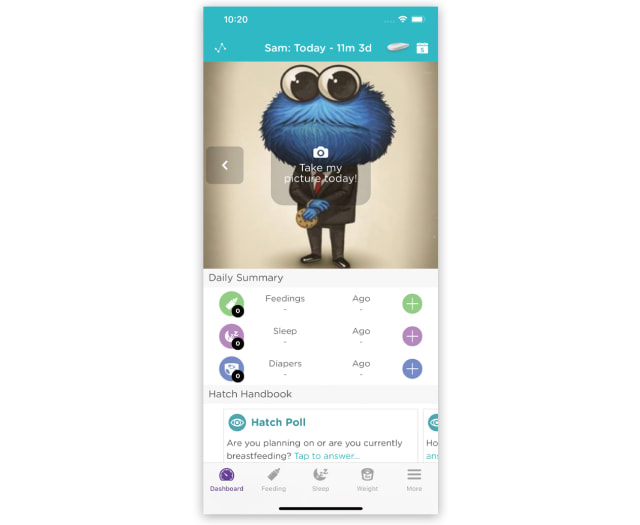
Hatch Baby
Lastly, one of the features of the dashboard, the Hatch Poll, purports to ask questions in order to offer helpful tidbits of advice. But these are not only overly personal (When did you first have sex after giving birth? Where did you deliver your baby?), they’re also too general to be helpful. In response to a question about postpartum depression, the poll reply lacks any details about how to seek help, find available resources, what steps to take to alleviate symptoms or what support groups are accessible online.
Wrap-up
Overall, I appreciate what Hatch was trying to achieve with the Grow. A scale that can keep track of a child’s weight, as well as all the other stats tracked by the Hatch Baby app, could be a useful tool for parents. The Grow also wins points for being elegantly designed, simple to use and easy to clean. But I had trouble getting a consistent reading and the app didn’t offer me some tracking features I’m used to in competing apps. Barring some meaningful firmware updates, I can’t currently recommend anyone spend $149 on the Grow. That being said, I’d be interested in seeing what a v2 would look like.
This article is auto-generated by Algorithm Source: www.engadget.com

